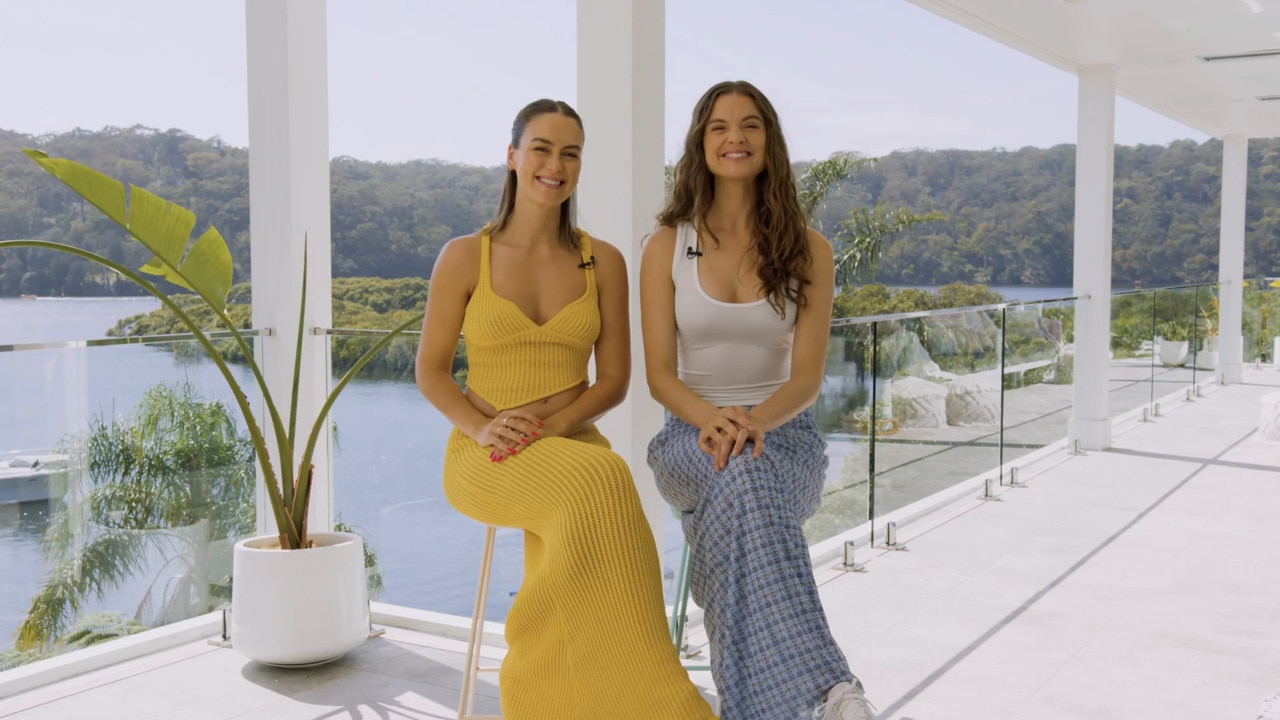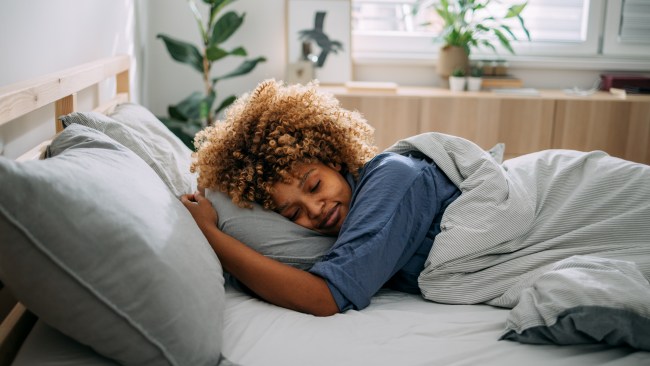Meet international model and diabetes advocate, Bambi Northwood-Blythe
She's a force

Lifestyle
Don't miss out on the headlines from Lifestyle. Followed categories will be added to My News.
The international model and diabetes advocate on career, self-confidence and being the change she wants to see.
You were diagnosed with type 1 diabetes (T1D) at the age of 11. How did receiving news like that at such a formative age impact you?
There was no family history, so it was a shock. Back then, people weren’t wearing medical devices that you could see, and there was no social media. Being in the children’s hospital, the condition wasn’t presented like it is today, where I have my glucose levels on my mobile phone and am connected to so many type 1 diabetics from around the globe. The condition has become so much more normal to me.
Your modelling career took off at 18 and you moved to New York. When did you decide to proudly show your T1D tech in shoots and campaigns?
I’d been modelling prior to continuous glucose monitors [CGM] becoming widely available, and remember getting a CGM in late 2018. It was a game-changer in my life for managing my diabetes, while also balancing my modelling career. I made the decision to proudly wear my CGM while on set for photo shoots as it’s helpful to hear an alarm without having to do anything. It allows me to show up more confidently each day, and I decided that should be normalised and celebrated – not hidden away.
My Dexcom G7 CGM is a small wearable that sends my glucose levels to my phone every five minutes. It predicts where my levels are headed and alerts me to highs and lows. It’s never been an issue with my work, but when I can style amazing outfits that really show it off, it’s fun.

In 2019, you enrolled in a business degree. What made you want to seek new challenges outside of modelling?
Firstly, I made a promise to my dad that I would get a degree, but went straight into modelling when I was young. So I was like, “I need to do this!” And at the same time, I was training for a half marathon. Both require the same thing: discipline – to sit down with the book and read it and write an essay, or put your sneakers on and run. Often, I would procrastinate. It was the thought, “I can’t do this,” and then running out of time. But it was a similar thing to go through both at the same time.
You’ve been instrumental in giving T1D visibility in the fashion industry. How have attitudes changed since you first started modelling? Has there been any noticeable shift?
I think that because I’m surrounded more by type 1 diabetics, whether that’s online or in real life, I get to see this diabetic community. Attitudes have shifted; there’s just more awareness than there was when I was growing up. If one person who has diabetes and is struggling can read this article, that’s all I want to do, because I wish I had someone like that when I was 12.
Now, having the Dexcom Warrior community [a global advocacy movement of 25,000 people living with diabetes who help spread a message of strength, perseverance, and optimism by illustrating the life-changing benefits of Dexcom CGM technology] is such a contrast to when I grew up and didn’t know anyone.
Was there ever a stage where you felt you had to hide it?
I was a Dexcom wearer before I was a Warrior. I was just amazed at the technology. There haven't been issues in modelling. Originally it was worn on my stomach, now it’s on my arm. New York isn’t the world’s warmest place so a lot of the time you are in long sleeves. It’s a cool accessory that you can wear.
The modelling industry thrives on chaos, with long shoots and endless travel. How do you balance the demands while maintaining a sense of routine and your diabetes management?
Where my blood sugar levels are will definitely impact how I sleep. Often, I find with jetlag that I’ll get off a long-haul and feel tired, but not physically tired. For me, all these little things have to be paired together. So, that means going for a walk just to burn the energy a bit more so you can then rest because when you have a good rest, your blood sugars the next day tend to be a lot steadier. In terms of food, packing snacks for the plane definitely helps. It’s about limiting the variables and sticking to my routine as much as possible.
In a job that requires high energy, moments of calm can be hard to come by. What do you do to unwind and relieve the strain of work?
I just did this thing called The Hoffman Process and that has been really amazing at coming back to yourself. It’s little simple things like putting your hands on your heart, closing your eyes, and getting that connection to self for one minute or two minutes. Or doing something called a Quadrinity Check-In where you check in with the four different parts of you [body, emotional self, intellect, and spiritual self]. They’re all very simple practices but I find that often in times of craziness, it feels super strange to sit down and do nothing even though that’s what I really need.
You ran your first half-marathon during this time. Have you always been a runner or was this a case of taking on a new challenge and working towards the distance?
It was definitely taking on a new challenge, getting my sneakers on and getting a really good playlist. I think being Australian, we’re always drawn to an active lifestyle and being outside. Doing that, especially when I travelled a lot, was a great way to make sure I got outdoors and got fresh air. It was just fun to see new places that way and work my way up to the distance. Like University, it was so much more about the discipline and proof that hard work pays off.
In 2023 you attended Slipstream, a social and educational weekend for adults living with T1D. What have you learned from connecting with others within the diabetes community?
When certain birds fly in a formation, if a couple need to drop back, the air will help push them along. It’s a similar metaphor for how Slipstream [the event] is. If someone falls out of line, you’ll still be able to stay in the stream and be pulled along by everyone else. I think that’s what this global community is all about. With diabetes, you can have days that are just off and you can have times where you’re doing so well.
There’s always a place where you can connect with others and get messages of strength, perseverance, and optimism. I think for me, too, it’s the visual aspect. Growing up, before all this technology, you would never be able to visually tell if someone had diabetes and throughout these four or five years, I’ve had people come up to me or I’ve gone up to them. It’s this instant connection and makes this device like a badge of honour.
A study found that people living with T1D have to make around 180 healthcare decisions a day, from their diabetes management to food, drinks, and exercise choices. For a disease with such a heavy mental burden, what tools do you use on a daily basis to manage your own stress levels to avoid burn out?
One of the things Dexcom offers is a follow app where people can follow along. They’ll see the blood sugar level and where it’s going. Through that, I have two of my sisters and two girlfriends. It’s practically really helpful, but I didn’t realise how mentally helpful it would be too. That someone is like, ‘Wow, your levels are really good this week,’ or a friend texting, ‘Hey, you’re low. Do you have candy?’
I have this support team now whereas prior to that no-one would know. Everyone I have on the follow app I also have on Emergency Override on my phone because I do find the nighttime a big struggle for me for my blood sugar not to drop. I have friends and family in different time zones and they can text me, call me, or FaceTime me just to say, ‘Are you eating sugar? Are you awake? Are you OK?’
More Coverage
Originally published as Meet international model and diabetes advocate, Bambi Northwood-Blythe




